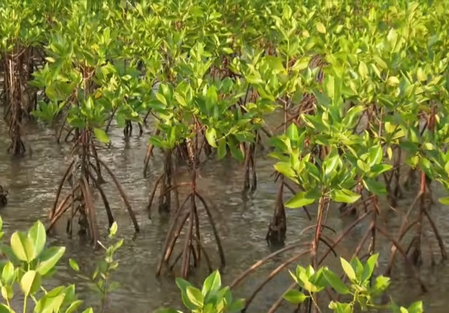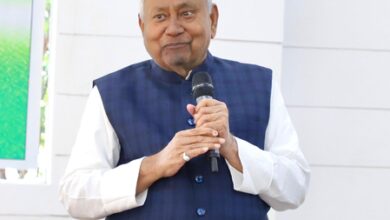PM Modi spotlights Kutch mangrove revival in Mann Ki Baat, urges nationwide tree planting

Ahmedabad, Oct 26 (IANS) In the 127th episode of his iconic radio programme ‘Mann Ki Baat’, Prime Minister Narendra Modi celebrated Gujarat’s triumph in mangrove conservation as an example of ecological resilience, drawing parallels between forests binding hilly terrains and mangroves protecting coastal ecosystems.
PM Modi emphasised how these “green guardians” mitigate natural disasters like tsunamis, while fostering biodiversity and livelihoods.
“Jungles bind the soil in hills and plains; similarly, mangroves are the lifeline of our coasts,” he said, invoking the spirit of environmental stewardship amid greetings for the upcoming Chhath Puja, which he described as a “profound unity of culture, nature, and society.”
At the heart of PM Modi’s address was the transformative story from Dholera in Gujarat’s Gulf of Khambhat.
Under the state Forest Department’s proactive efforts, over 3,500 hectares of mangroves — primarily Avicennia marina species — have been planted in the past five years, aligning with the Central government’s MISHTI (Mangrove Initiative for Shoreline Habitats and Tangible Incomes) scheme launched in 2023.
This initiative has propelled Gujarat to the national forefront, with 19,020 hectares afforested in just two years, expanding the state’s mangrove cover to 1,175 square kilometres — the second-largest in India after the Sundarbans. The results are striking. The 2024 wildlife census revealed a surge in marine life along Dholera’s revitalised shores.
“Dolphins frolicking in greater numbers,” PM shared, “and thriving populations of crabs…This is nature’s way of thanking us,” PM Modi noted, crediting community involvement.
Echoing these successes, PM Modi highlighted Kori Creek in Kutch district, home to one of India’s richest mangrove belts spanning 795 sq km. Here, the Forest Department runs a dedicated mangrove restoration centre, integrating animal welfare programmes that rescue and rehabilitate coastal wildlife. If reports are believed, recent sightings of several dolphins across 4,087 sq km from Kutch to Bhavnagar confirm the ecosystem’s rebound, turning degraded coasts into vibrant habitats.”
The 2024 census echoed positive trends: 7,672 wild asses in the Rann of Kutch (a 26 per cent rise), alongside increased sightings of otters, jackals, and seabirds.
Inland mangroves at Guneri village, declared Gujarat’s first Biodiversity Heritage Site in January, further underscore Kutch’s unique ecosystems, possibly remnants of ancient riverine formations.
Buoyed by these “positive tidings”, the Ahmedabad Social Forestry Division announced its maiden marine life survey for the district’s coasts, inspired by a similar 2024 initiative in Kutch. This will assess fish stocks, invertebrates, and dolphin movements, building on Gujarat’s overall mangrove expansion of 6,930 hectares in 2023-24, with 12,000 more planned for 2025-26. Such surveys aim to inform policy, boosting eco-tourism and sustainable fisheries amid a national marine fish catch dip of 2 per cent last year.
PM Modi concluded with a heartfelt call to action, “Wherever we live, let us plant a tree in the name of our mother — under ‘Ek Ped Maa Ke Naam’.”
He urged citizens to contribute via MyGov or the NaMo App, framing tree-planting as a tribute to maternal nurturing and planetary health.
“Trees benefit every being, transcending borders,” he added, linking it to global goals like the LiFE movement.
With Gujarat leading MISHTI efforts, PM Modi’s message says, “conservation is collective, yielding tangible gains in biodiversity and disaster resilience.”
–IANS
sktr/dpb





